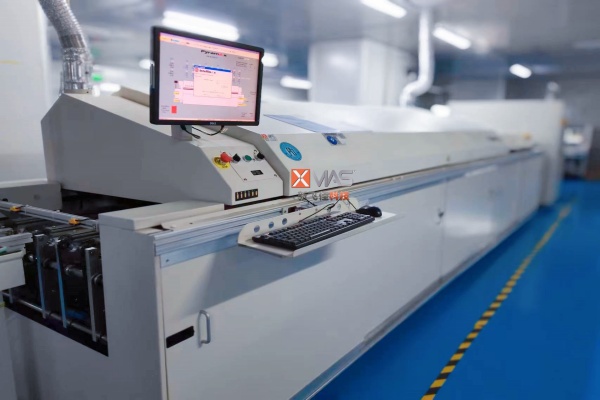SMT patch processing plant has a kind of equipment looks long and wide, this big guy we usually call reflow soldering equipment, can be said to be one of the automated patch process just need production equipment. All kinds of products may need to go through it for baking, our production workshop is almost every day to see it open the figure of the operation. Today, we will talk about the working principle of reflow soldering oven, especially how it sets the temperature profile to control the transfer of heat.
First, we need to understand a common misconception. The temperature displayed on the reflow oven's operator interface is not the temperature on the PCB (circuit board) as you might think, nor is it the temperature of the surface of the heat generator or the resistance wire, but the temperature of the hot air. The hot air circulates inside the furnace to help the components on the PCB reach the desired soldering temperature.
So how do you set this hot air temperature?
This involves the basic principle of heat transfer. Simply put, if the temperature of the PCB is lower than the set oven temperature, then the PCB will absorb heat from the hot air and gradually warm up; conversely, if the temperature of the PCB is higher than the oven temperature, it will release heat and the temperature will drop. Only when the two temperatures are equal, the heat exchange will stop.
Here is a key point hint:
The greater the difference between the oven temperature and the PCB temperature, the faster the PCB temperature changes. Therefore, when setting the oven temperature, we need to consider the density and size of the components on the PCB. If the components are dense and large, then to achieve thermal equilibrium requires more heat, then we need to increase the furnace temperature; on the contrary, if the components are sparse and small, we can appropriately reduce the furnace temperature.
Of course, in addition to furnace temperature, there is a factor that can not be ignored, that is, the chain transfer speed. Chain transfer speed determines the time PCB stays in the furnace. If the chain speed is slow, PCB in the furnace time is long, even if the furnace temperature is set a little lower, but also through a long time of heat exchange to achieve thermal balance; Conversely, if the chain speed, PCB in the furnace time is short, then you need to improve the furnace temperature to ensure the quality of welding. Reflow soldering furnace temperature profile setting is also a technical job, need to consider a variety of factors. Only master the principle of which we can grasp the best results of each product over the furnace.


